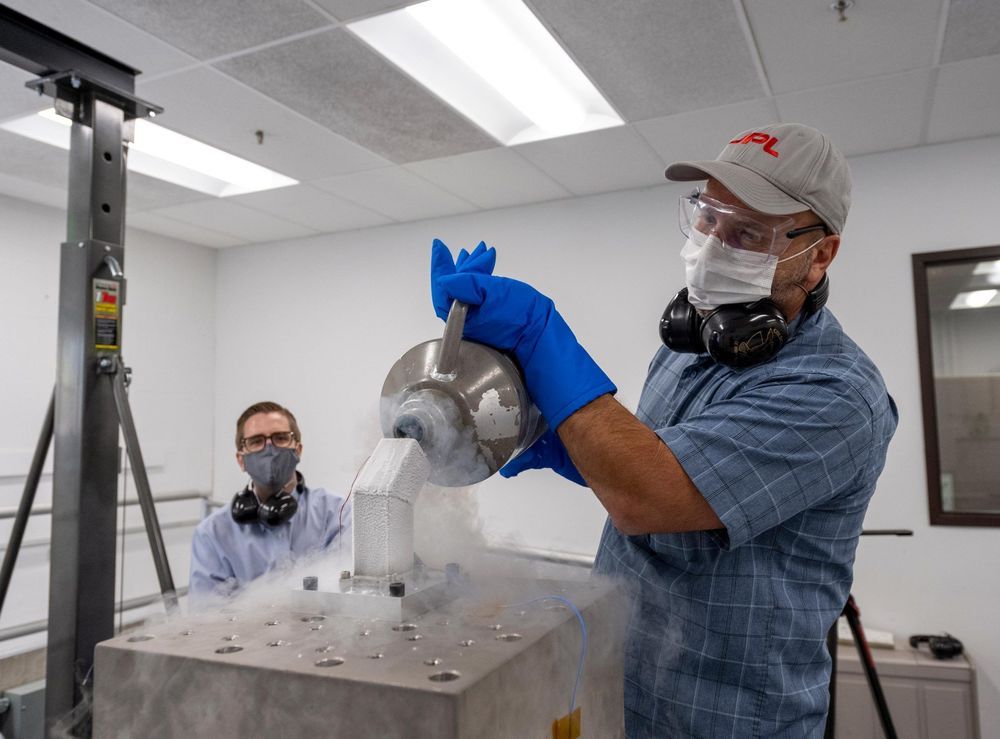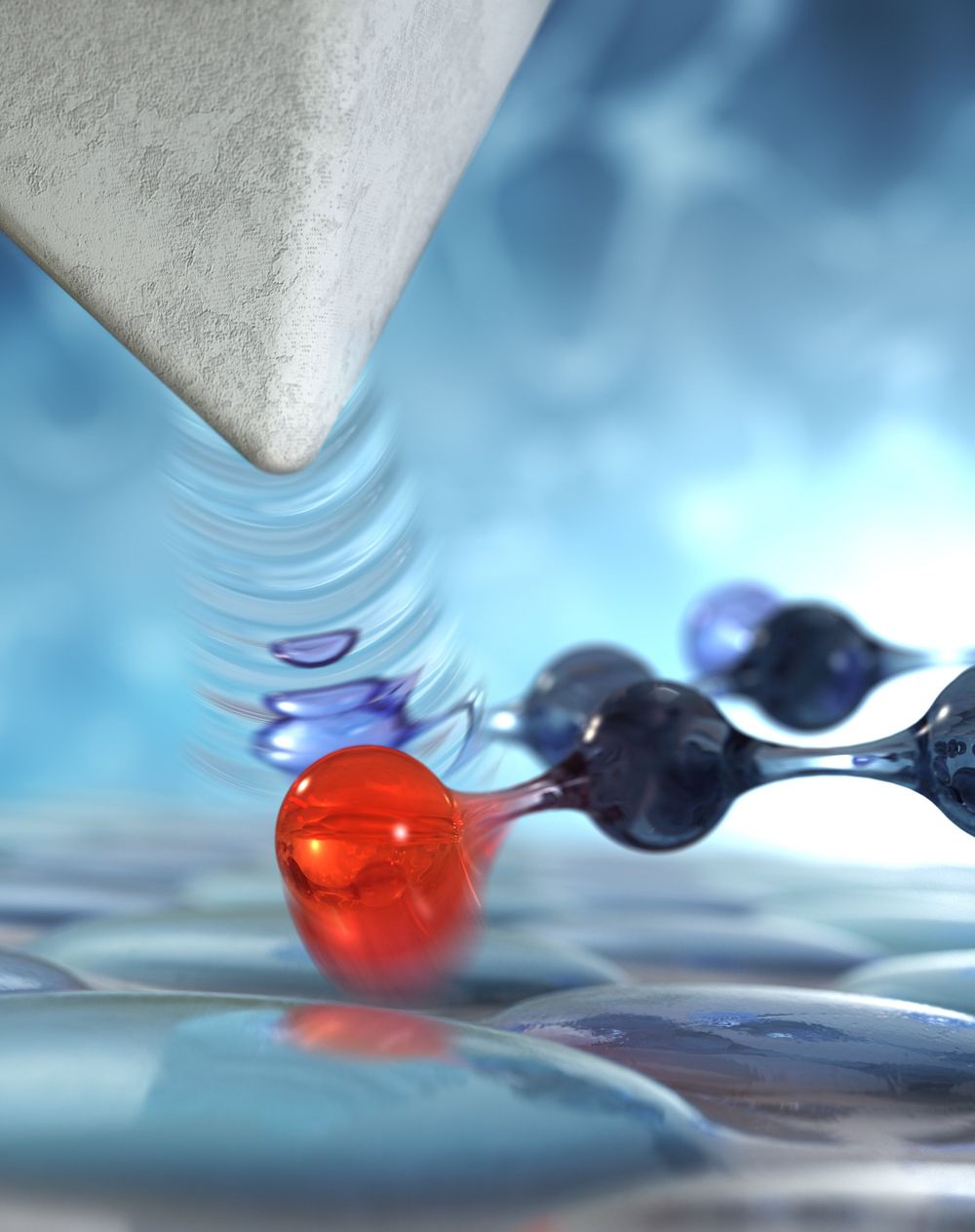Circa 2018
It might sound like a pseudoscientific fantasy, but the mind can shape health, behavior and maybe even society as a whole. Stanford researchers are bridging disciplines to understand what our minds can do and how they do it.


The cosmos was born in a churning fluid 300 million times hotter than the sun. We’ve recreated this hell, and it’s not just hot, it is also very, very strange, says Amanda Gefter (science writer based in London). TO LOOK deep into the fundamental structure of matter is to look billions of years back in time, to the moment when matter first blinked into being. Recreating the conditions of that moment has long been an aim for physicists wanting to understand how the universe evolved from the cosmic fireball that existed a fraction of a second after the big bang. Now researchers at the Relativistic Heavy Ion Collider (RHIC) at Brookhaven National Laboratory in Upton, New York, have, almost certainly, finally recreated the moments after creation. By colliding nuclei together at enormous speeds, RHIC experimenters were able to break down the structure of nuclear matter. This resulted, most experts agree, in the formation of a long-sought-after plasma that is believed to be the primal stuff of the cosmos, the state of matter at the beginning of time. It turns out, though, that the nature of matter is inextricably tied to the vacuum in which it resides. And the RHIC experiments have thrown up some surprises. They seem to show that the vacuum is a richer and more complicated place than was previously imagined. They suggest the boundary between something and nothing is more blurred than experts had predicted. The stuff made at RHIC is a plasma consisting of quarks and gluons, the most basic building blocks of everything we see around us. Quarks combine in threes to form the protons and neutrons that comprise the nucleus of every atom. But while we can observe a single proton or neutron, we cannot observe a single quark. Quarks are perpetually confined to group living. In fact, the harder you try to pull quarks apart, the stronger the force between them becomes. This is part of the theory of quantum chromodynamics (QCD), which describes how the force between the quarks is carried by the massless gluons.
In QCD, it is the vacuum that imprisons the quarks. While it may sound like a barren place, the vacuum of QCD is a complex, dynamic arena. It writhes with virtual particles that appear in pairs, then annihilate and disappear again. It is haunted by strange creatures of various kinds, too, topologically complex knots and twists that are relatives of wormholes, places where space turns in on itself and seems treacherous. These knots and twists carve out paths for the gluons to travel along, thereby keeping the quarks together. These strange ideas have credence because of the success of QCD in predicting the reactions of fundamental particles. The only way to unglue quarks is to “melt” the vacuum between them. But the vacuum doesn’t give in easily. To raze its jagged terrain requires enormous amounts of concentrated energy, found only in powerful nuclear collisions, or the fireball at the earliest moments of time.

Many exploration destinations in our solar system are frigid and require hardware that can withstand the extreme cold. During NASA ’s Artemis missions, temperatures at the Moon’s South Pole will drop drastically during the lunar night. Farther into the solar system, on Jupiter ’s moon Europa, temperatures never rise above −260 degrees Fahrenheit (−162 degrees Celsius) at the equator.
One NASA project is developing special gears that can withstand the extreme temperatures experienced during missions to the Moon and beyond. Typically, in extremely low temperatures, gears – and the housing in which they’re encased, called a gearbox – are heated. After heating, a lubricant helps the gears function correctly and prevents the steel alloys from becoming brittle and, eventually, breaking. NASA’s Bulk Metallic Glass Gears (BMGG) project team is creating material made of “metallic glass” for gearboxes that can function in and survive extreme cold environments without heating, which requires energy. Operations in cold and dim or dark environments are currently limited due to the amount of available power on a rover or lander.
A team of researchers from Stowers Institute for Medical Research, Howard Hughes Medical Institute and Stanford University has discovered conserved regeneration-responsive enhancers linked to tail regeneration in fish common to two species. In their paper published the journal Science, the group describes their genetic study of two fish species and what they learned about the role of conserved regeneration-responsive enhancers in allowing the fish to regenerate tail parts.
As the researchers note, some species are able to regenerate parts of their body when they are lost. For instance, lizards can regrow lost tails, while many other animals, including most mammals, cannot regrow damaged body parts. Despite much research, scientist have not been able to explain this. In this new effort, the researchers have found what they believe to be a major clue—conserved regeneration-responsive enhancers.
Prior research has shown that DNA sequences include non-coding bits called enhancers, which, as their name implies, play a role in enhancing gene activity. In this new effort, the researchers wondered if there might be certain enhancers involved in the regeneration response in fish—in this case, African killifish and zebrafish. They noted that prior research had shown that the two species split from the same genetic branch approximately 230 million years ago—a short enough period to allow them to see changes to their DNA that allowed both to regenerate the ends of their tails if they were bitten off by predators—or cut off by researchers.

The concept of quantum communication, with security guaranteed by the laws of physics, took the worl.
If you do not yet have an account, please register so you can.


Scientists from Regensburg and Zurich have found a fascinating way to push an atom with controlled forces so quickly that they can choreograph the motion of a single molecule within less than a trillionth of a second. The extremely sharp needle of their unique ultrafast microscope serves as the technical basis: It carefully scans molecules, similar to a record player. Physicists at the University of Regensburg now showed that shining light pulses onto this needle can transform it into an ultrafast “atomic hand.” This allows molecules to be steered—and new technologies can be inspired.
Atoms and molecules are the constituents of virtually all matter that surrounds us. Interacting with each other according to the rules of quantum mechanics, they form complex systems with an infinite variety of functions. To examine chemical reactions, biological processes in a cell, or new ways of solar energy harvesting, scientists would love to not only observe individual molecules, but even control them.
Most intuitively, people learn by haptic exploration, such as pushing, pulling, or tapping. Naturally, we are used to macroscopic objects that we can directly touch, squeeze or nudge by exerting forces. Similarly, atoms and molecules interact via forces, but these forces are extreme in multiple respects. First, the forces acting between atoms and molecules occur at extremely small lengths. In fact, these objects are so small that a special length scale has been introduced to measure them: 1 Ångström (1Å = 0.000,000,000,1 m). Second, at the same time, atoms and molecules move and wiggle around extremely fast. In fact, their motion takes place faster than picoseconds (1 ps = 0.000,000,000,001 s). Hence, to directly steer a molecule during its motion, a tool is required to generate ultrafast forces at the atomic scale.

Researchers have discovered how a protein in plant roots controls the uptake of minerals and water, a finding which could improve the tolerance of agricultural crops to climate change and reduce the need for chemical fertilizers.
The research, published in Current Biology, shows that members of the blue copper proteins family, the Uclacyanins are vital in the formation of Casparian strips. These strips are essential structures that control mineral nutrient and water use efficiencies by forming tight seals between cells in plants, blocking nutrients and water leaking between.
This is the first evidence showing the implications of this family in the biosynthesis of lignin, one of the most abundant organic polymers on earth. This study reveals that the molecular machinery required for Casparian strip lignin deposition is highly ordered by forming nano-domains which can have a huge impact on plant nutrition, a finding that could help in the development of crops that are efficient in taking in the nutrients they need.
Grab a buddy and try this! 🏃💪
A new display produces stunning 3D images, by illuminating a small plastic bead which is levitated using ultrasound. This allows the display to be visible as well as to create audible sound and tactile feedback. Nature reporter Lizzie Gibney travels to the University of Sussex in the UK to learn more.